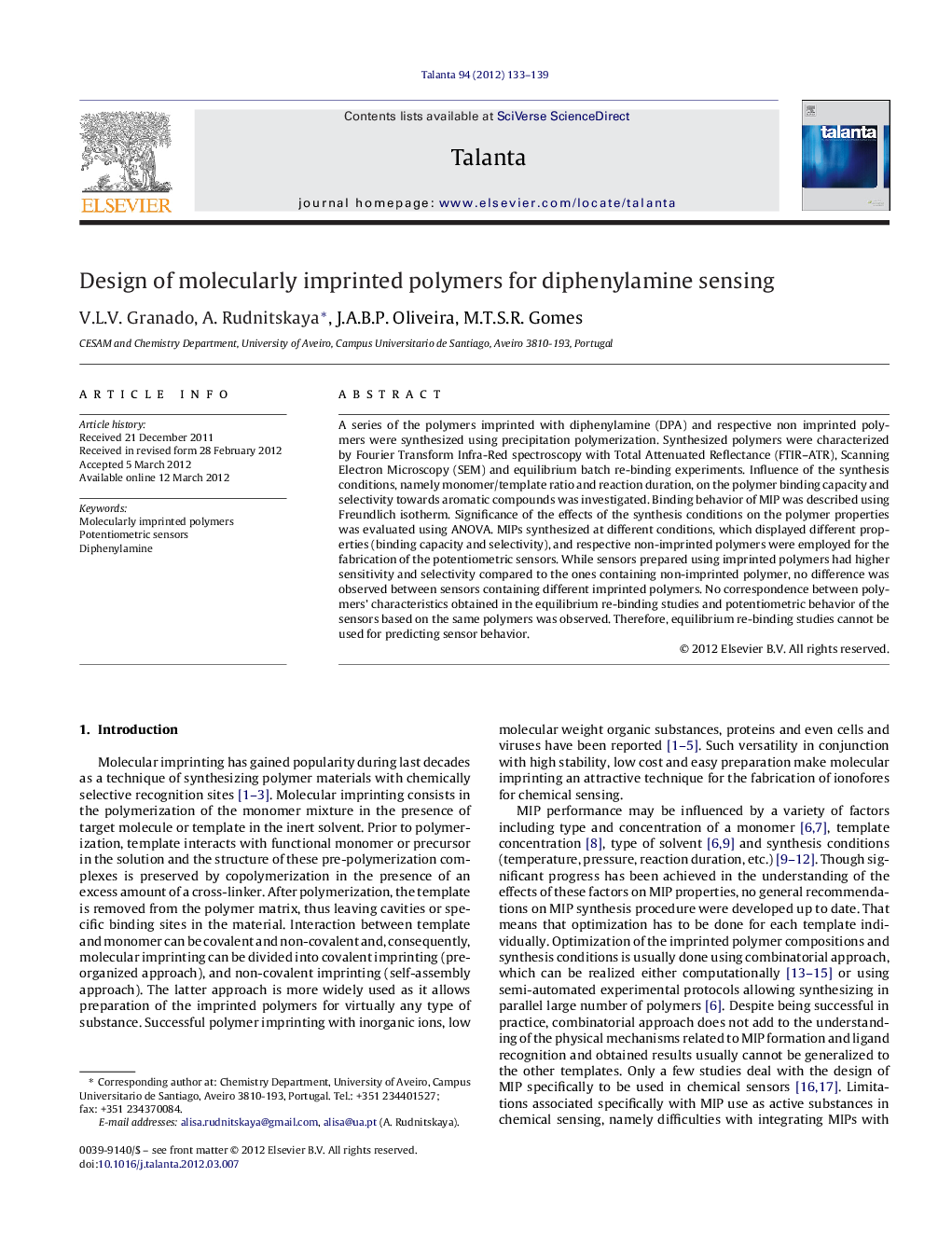| Article ID | Journal | Published Year | Pages | File Type |
|---|---|---|---|---|
| 1245625 | Talanta | 2012 | 7 Pages |
A series of the polymers imprinted with diphenylamine (DPA) and respective non imprinted polymers were synthesized using precipitation polymerization. Synthesized polymers were characterized by Fourier Transform Infra-Red spectroscopy with Total Attenuated Reflectance (FTIR–ATR), Scanning Electron Microscopy (SEM) and equilibrium batch re-binding experiments. Influence of the synthesis conditions, namely monomer/template ratio and reaction duration, on the polymer binding capacity and selectivity towards aromatic compounds was investigated. Binding behavior of MIP was described using Freundlich isotherm. Significance of the effects of the synthesis conditions on the polymer properties was evaluated using ANOVA. MIPs synthesized at different conditions, which displayed different properties (binding capacity and selectivity), and respective non-imprinted polymers were employed for the fabrication of the potentiometric sensors. While sensors prepared using imprinted polymers had higher sensitivity and selectivity compared to the ones containing non-imprinted polymer, no difference was observed between sensors containing different imprinted polymers. No correspondence between polymers’ characteristics obtained in the equilibrium re-binding studies and potentiometric behavior of the sensors based on the same polymers was observed. Therefore, equilibrium re-binding studies cannot be used for predicting sensor behavior.
► Polymers impressed with dipheylamine synthesized using precipitation polymerization. ► Influence of monomer/template ratio and reaction time on polymer properties studied. ► Polymers characterized using FTIR-ATR, SEM and re-binding study. ► Potentiometric sensors with MIP/PEDOT membrane prepared. ► No correspondence between MIP parameters from re-binding studies and potentiometry.
